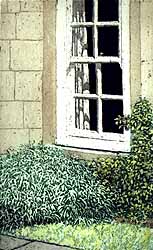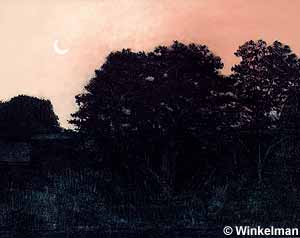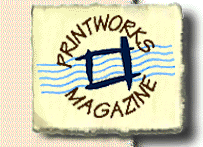For me, the art of printmaking offers a form of expression, which is
impossible to obtain in any other medium. It is a democratic art form, where multiple
original impressions can be pulled from matrices making an edition of prints available to
a wide audience, and at a reasonable cost.
I'm fascinated by this old technology of rending metal and wood, then
printing it on heavy presses of steel to produce delicate imagery with ink on paper. It's
a consuming activity whose power of visual communication has no parallel.
Over many years, by trial and error, I have developed my skills with
intaglio and relief printing. Together with my love of landscape I use the qualities of
the media to convey the essence of those beautiful moments, experienced in landscape,
under unusual light and weather conditions.
I never create any two images in quite the same way. Sometimes I'm
inspired by a chance situation; at other times I purposefully search for subject matter.
When my imagination realises an idea I immediately make sketches and notes before making a
matrix. On some occasions a camera is used to record details, or I may return to a place
to draw if certain information is lacking.
 The
idea for 'Bow Window' came about one sunny July morning. I happened
to be printing the first part of an edition from an etching when, as
I looked up from wiping the black ink off the plate, I was struck by
the unusual colour of some Japonica leaves seen out of the window. A
shaft of sunlight illuminated the new yellow growth of a Quince, which
grows between a bay window and a bed of ornamental grass by the flagstone
path.
The
idea for 'Bow Window' came about one sunny July morning. I happened
to be printing the first part of an edition from an etching when, as
I looked up from wiping the black ink off the plate, I was struck by
the unusual colour of some Japonica leaves seen out of the window. A
shaft of sunlight illuminated the new yellow growth of a Quince, which
grows between a bay window and a bed of ornamental grass by the flagstone
path.
I contemplated the composition while continuing to print. The full range
of tonalities and textures begged to be immortalised: I could imagine the shapes of the
window spars, the blades of grass, the leaves, the stonework, and the black void inside
the unlit room, all transformed into aquatint.
I had to do something about it while the vision was clear in my mind. So
I promptly cleaned my hands and abandoned the printing in order to capture the scene in a
carefully made pencil sketch.
Some days later, using this drawing, I methodically developed my idea
directly on a 3 x 5" copper plate. I etched the aquatint ground in Dutch Mordant over
eight progressive immersions with carefully timed and stopped-out bites. The first proof
revealed satisfactory results in all except the darkest area, so I took the risk of laying
a second ground to etch the plate again. The results were good and I experimented with
hand-mixed powdered-colour inks, applied in discreet areas. The yellow was applied by hand
with a paintbrush to the Japonica leaves of each proof once they had dried. The whole
effort took all my full attention for eight working days. Later the plate was steel faced
and an edition of 150 was printed in batches.

'Twilight' happened in a totally different way. I had drawn a portrait
in drypoint as an experiment which failed, but rather than disposing of the plate I
continued working on it in another direction.
While scraping the surface and rotating the copper plate, at ninety
degrees part of the remaining marks reminded me of a tree trunk. I added to them with a
mezzotint rocker and shaped a new image with scraper and burin. I printed the plate and,
in some twenty subsequent states, continued engraving from memory the image of an apple
tree at the bottom of the garden.
The density of the composition began to remind me of the garden in
evening. So I made another plate in aquatint for a second colour, to convey that magic
moment after sunset when the moon in its first quarter is also about to set and the cool
earth and warm sky are almost merging in darkness.
As old as these simple techniques are, there remains an enormous number
of possibilities to be explored. It seems that with skills developed through practice
comes yet greater insight of other potentials. This is to say nothing of the attraction
for experimentation in other printmaking media, including the newest technologies of the
electronic age.
Joe is a former President of the Royal Society of Painter-Printmakers.
Click here for contact details and to see more of
his work.
joe@winksoxford.demon.co.uk
 The information resource for printmakers
The information resource for printmakers  The information resource for printmakers
The information resource for printmakers